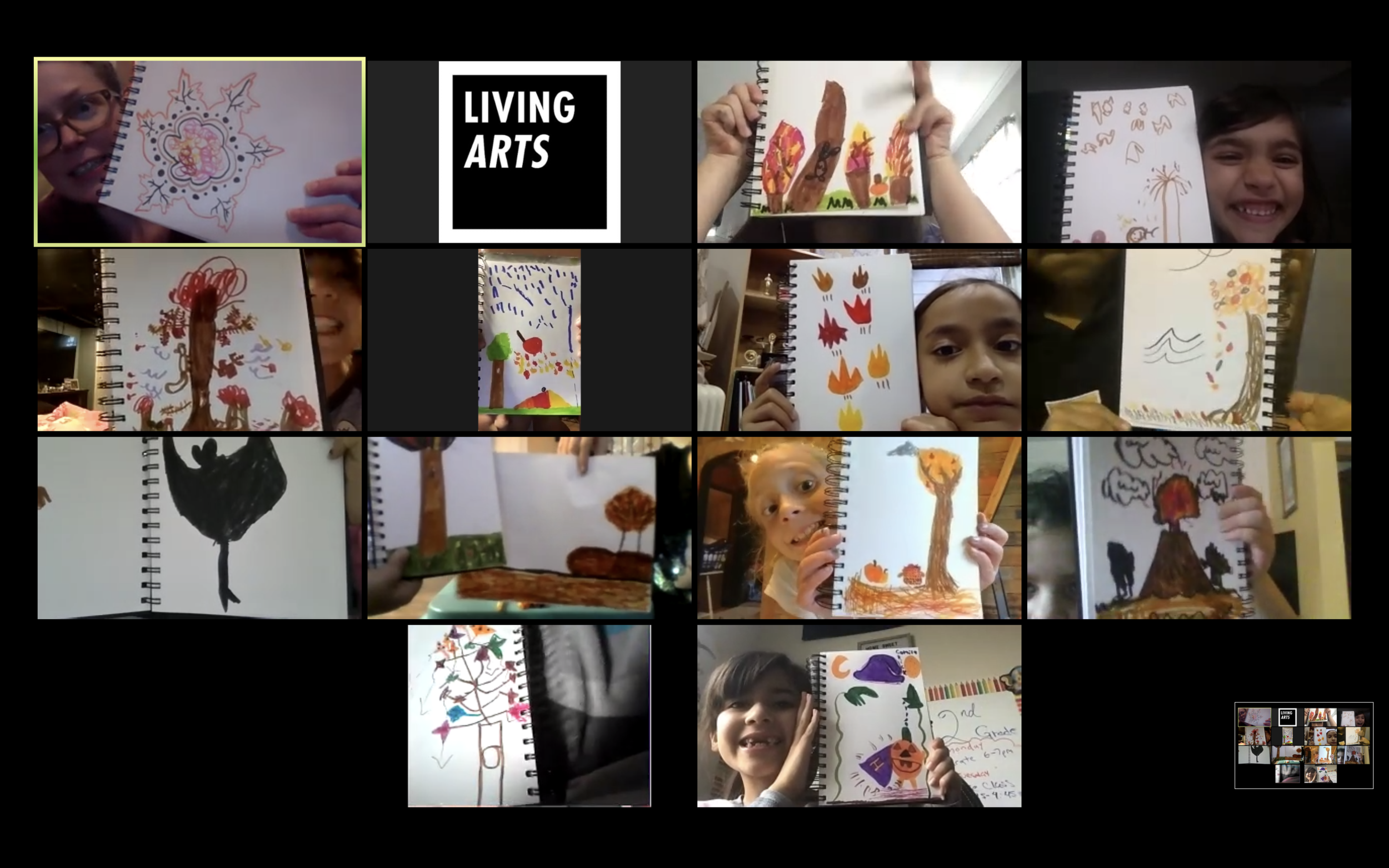Virtual Learning After-school
Living Arts Programming looks a bit different right now, as do most programs due to the pandemic. When we moved into Fall, we found new ways to stay connected virtually with our youth and parents. We recently caught up with Living Arts Dance Program Director and Teaching Artist, Marianne Cox, to learn how our after-school classes have adjusted, what it looks like, and what she’s looking forward to as an instructor.
What did programming look like over the summer?
This summer at OSA, a number of teaching artists continued connecting with their classes online in order to bring closure to graduating seniors, give students space and initiative to create, and maintain the guidance, connection, and healthy physical practices for our youth that they typically receive in our in-person classes. We also launched our Living Arts At Home residencies, which provided a space for artists to share their knowledge and talent from their own creative spaces and imaginations and expanded the virtual capabilities of our programming. For teens, we developed a teen-led virtual conversation series titled “Beauty in Ugly Times” which gave OSA students the opportunity to design and lead a program for teens, by teens. Discussion themes focused on the pandemic, mental health, and social justice and proved to be a healthy, enlightening, and necessary experience for the youth and adults involved.
Marianne Cox, Dance Program Director and Teaching Artist
What do Out-of-School Art (OSA) classes look like this fall? How have services changed?
Considering the health and safety of all participants, we modified our typical in-person schedule to a virtual format through December with a re-examination of returning to in-person class at the end of the year. The program is ready to transition back into the studios with proper safety precautions in place as soon as it is possible. Apart from technical instruction, our classes are also focusing on maintaining relationships among youth and with Teaching Artists that have developed over years of participation, connecting with each other on a personal level, processing this time in our world through artistic practice, and maintaining a connection to the art forms we teach. Now more than ever, our focus on social-emotional learning is important for our young people who are experiencing disconnectedness, emotional stress, and social disruption in their lives in a way we haven't seen before.
Ms. Cathy and her Intro to Dance 2 class
Ms. Marianne and her Level 1 Mix A Class
What/how are TA's adjusting to teach classes this fall?
Spatial and technical limitations as well as the inability to connect physically present challenges that are being worked through individually and collaboratively. Teaching Artists are focusing much more on artistic processes and integrating social-emotional learning than just on the artistic outputs. That way, our youth will learn to use their art forms as an outlet and a way to process what is happening in their lives while they also learn about the technical aspects of the art forms.
What are you excited about to explore this fall?
Being together after months apart is enough to get me excited, but I'm also looking forward to learning and growing with my students, fellow Teaching Artists, and Staff.
Sensei Robert Nearon and his Karate class
Ms. Stephanie and her Visual Art Class





